
The images here are by JeongMee Yoon, a photographer from South Korea
whose work makes visible the gender divisions that so often prevail in the bedrooms of children from the time they are born. If you search for her name, dozens of pink and blue photos will appear, pictures of children surrounded by possessions in the predominant color of their childhood. These are part of her Pink and Blue Project, which she describes as exploring:
the trends in cultural preferences and the differences in the tastes of children (and their parents) from diverse cultures, ethnic groups as well as gender socialization and identity. The work also raises other issues, such as the relationship between gender and consumerism, urbanization, the globalization of consumerism and the new capitalism.Yoon explains that The Pink and Blue Project was prompted by her five-year-old daughter "who loves the color pink so much that she wanted to wear only pink clothes and play with only pink toys and objects." She also has an eleven-year-old son, who chooses clothing from the blue hues "even though he does not seem to particularly like the color blue over other colors." A couple of her examples defy the stereotypes but reinforce the idea of having a "favorite color" (one of those ubiquitous questions during childhood): "Lola and Her Yellow Things" and "Steve and His Red Things".
Yoon's work with this concept was the subject of a New York Times piece in February 2008, where the tone is fairly effusive about "the wonderful world of color." (There is a slide show by that name there, too.) A blogpost at Daughter Number Three considers the more invasive implications of gender color-typing. DN3 also links to an interesting post by social psychologist Sam Sommers called "Gender Stereotypes and the Fast Food Drive-Thru." (One more reason to avoid giving your kids this terrible food.)
It all got me thinking about how much energy parents invest in their children's objects and identities, a topic Jesse Ellison touched on in her Newsweek piece, "My Parent's Failed Experiment with Gender Neutrality." Failed? Not so sure. At least her parents resisted the compulsion to crowd out her childhood with one preassigned color. There may be huge intangible benefits to that.





























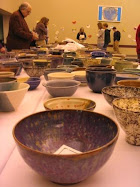



















































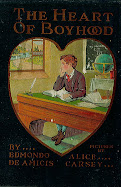



























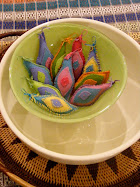






























.jpg)














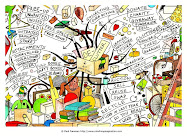









































































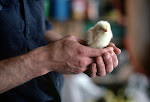
















































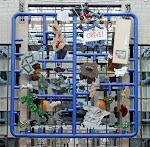.jpg)








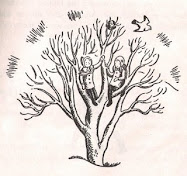







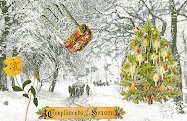
























































































6 comments:
These are very appealing works but it is essential for anyone considering this work to know about Portia Munson's fantastic Pink Project installation from the Bad Girls Show at the New museum in NY in 1994 -- this piece is currently on view at P.P.O.W. Gallery -- I know JeonMee Yoon is aware of this piece, but the closeness of her work to Munson's is almost plagiarism unless it is acknowledged -- here is an instance of matrilineage if ever there was one.
I would perhaps develop my comment in this way: that two artists would focus on the same type of gendered color coding of endless amounts of cheap every day commodities is an indicator of a general situation, but if one knows that the other did the --visually identical -- work of discovery and research already, what is her responsibility to the earlier artist?
I would add one point: JeonMee Yoon's work emphasizes the children who are the consumer/ collectors of these objects which have been created in order to help them conform to gender stereotypes. Portia's work which came first pointed to the astounding lengths to which commodity culture went to create, uphold and benefit from stereotypical femininity -- the sheer amount and type of objects that are PINK. It is also a very beautiful art work,in the real, as a sculpture, and also as a kind of a painting, as light hits it, as it fills your visual field, absorbs the viewer in the endless wonderment of detail while filling one's eyes with color, and its beauty, the intense visual pleasure is part of the deep significance of the piece: that these engendering devices give pleasure is part of the conundrum of femininity (cf. John Berger and Laura Mulvey and the debates around particularly the latter essay -- the fact that women also do get pleasure of their own from producing themselves for the male gaze, even as that process may rob them of their own sexual subjectivity.).
Thank you so much, Mira, for your perceptive contextual and critical comments. I wasn't aware of Portia Munson's work, but will be seeking it out for a future post.
I especially like the point you make about the 3-dimensional aspects of Munson's installations, making them both sculptural and painterly when experienced directly.
Just looking at the photographs of so much one-color saturation I am almost filled with nausea (especially around the toys: see my earlier blogpost about the plastic kitchens at Toys R Us: http://elenabella.blogspot.com/2009/05/toys-r-us-grocery-stores-everything-you.html). One undercurrent of all of these works is that play between desired and repulsive objects. They are also of interest in relation to recent public attention to "hoarding" as an affective disorder.
Thanks for the link to Jesse Ellison's article. I was meaning to read that.
Her point about feminists being wrong about gender neutrality makes me annoyed (I was going to write "angry," but I guess that's putting it to strongly).
Just because Jesse wanted to wear pink frilly dresses despite growing up without a TV in rural Maine does not mean that stereotypical gender attributes are a natural state.
Despite all society can throw at us to conform to gender roles, the range of variation within each gender (or sex) is much broader than the differences between -- it's more like a continuum that is weighted with women toward one end and men toward the other... but plenty of people overflow the center point of the continuum, in both directions. If that makes sense.
P.S. thanks to Mira as well -- I checked out Portia's work.
That was, of course, supposed to be "too strongly" in my comment....
DN3, I agree. I think that Jesse Ellison sells her cohort short with this statement, making them sound much more naive and uniform in their tastes than they actually are: "By turning our back on our mothers' gender-neutral principles, all while taking it for granted that they had fought the great fight and won, we were unprepared for the fact that sexism still exists." Both of us know plenty of young people who wear Birkenstocks, cowboy boots and heels: many kinds of footwear – and gender variation – out there today, and certainly an implicit awareness of sexism, cutting many different ways. There is a special kind of sexism that exists around issues of homophobia, as we see tonight in relation to "Don't Ask, Don't Tell."
What you say about gender and sex variation echoes the research findings at The Kinsey Institute, as the scientists and cultural critics there work to update and verify that particular hunch of Alfred Kinsey's.
Post a Comment